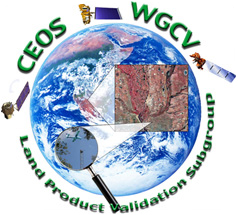
Focus Area on Evapotranspiration Product Validation
Yun Yang, Cornell University, USA
Carmelo Cammalleri, Politecnico di Milano, Italy
Evapotranspiration Definition
Evapotranspiration (ET) is the water transferred from the land surface to the atmosphere, which includes evaporation from the soil and other surfaces, and transpiration from plants. ET is an essential part of the water cycle and plays a critical role in weather and climate patterns. It is also a key factor in agriculture related to crop condition monitoring and irrigation scheduling and in forest related to forest health, drinking water supply and other ecosystem services.
Units: Evapotranspiration is expressed in units of mm/time-step. The time-step can vary from hourly, daily, monthly, annual and multi-years. The associated latent heat is expressed in units of energy flux density (commonly referred to as energy flux), for example W/m2.
Highest Validation Stage Currently Reached for Satellite-Derived ET Products
Validation stage 2 (LPV validation stage hierarchy) - Validation stage 2 - The highest LPV validation stage reached for satellite-derived evapotranspiration products.
Validation Good Practices
The standard procedure to generate reference data for ET includes the use of ground measurements from eddy covariance flux towers and lysimeters. Efforts about validating ET includes:
Volk, J.M., Huntington, J.L., Melton, F.S., Allen, R., Anderson, M., Fisher, J.B., Kilic, A., Ruhoff, A., Senay,
G.B., Minor, B. and Morton, C., 2024. Assessing the accuracy of OpenET satellite-based
evapotranspiration data to support water resource and land management applications. Nature Water,
pp. 1-13.
Chen et al. 2021. Remote Sensing of Global Daily Evapotranspiration based on a Surface Energy Balance
Method and Reanalysis Data. JGR Atmos. 10.1029/2020JD032873
Tran, B. N. and van der Kwast, J. and Seyoum, S. and Uijlenhoet, R. and Jewitt, G. and Mul, M. Uncertainty
assessment of satellite remote-sensing-based evapotranspiration estimates: a systematic review of
and gaps. Hydrology and Earth System Sciences, vol. 27, pp. 4505-4528.
The ET focus area of the CEOS LPV subgroup is planning to develop a good practices protocol for the validation of satellite-derived evapotranspiration products. A draft is being developed that includes sampling schemes for reference datasets.
Evapotranspiration Reference Data Sets
The best currently-available dataset for the validation of evapotranspiration products consists of eddy covariance flux tower networks. Numerous stations at global scale can be found with the FLUXNET network. A consolidated dataset of controlled variables with standard protocols were disseminated as part of the FLUXNET2015 dataset (Pastorello et al., 2020).
- Flux Tower Eddy Covariance - FLUXNET, AmeriFlux networks.
- Lysimeter data
- Sap flow
Volk, J.M., Huntington, J., Melton, F.S., Allen, R., Anderson, M.C., Fisher, J.B., Kilic, A., Senay, G., Halverson, G., Knipper, K. and Minor, B., 2023. Development of a benchmark Eddy flux evapotranspiration dataset for evaluation of satellite-driven evapotranspiration models over the CONUS. Agricultural and Forest Meteorology, 331, p.109307.
Pastorello, G., Trotta, C., Canfora, E. et al. The FLUXNET2015 dataset and the ONEFlux processing pipeline for eddy covariance data. Sci Data 7, 225 (2020). https://doi.org/10.1038/s41597-020-0534-3.
- NASA Official: Sadashiva Devadiga
- Website Manager: Jaime Nickeson
- Last Updated: December 9, 2025


